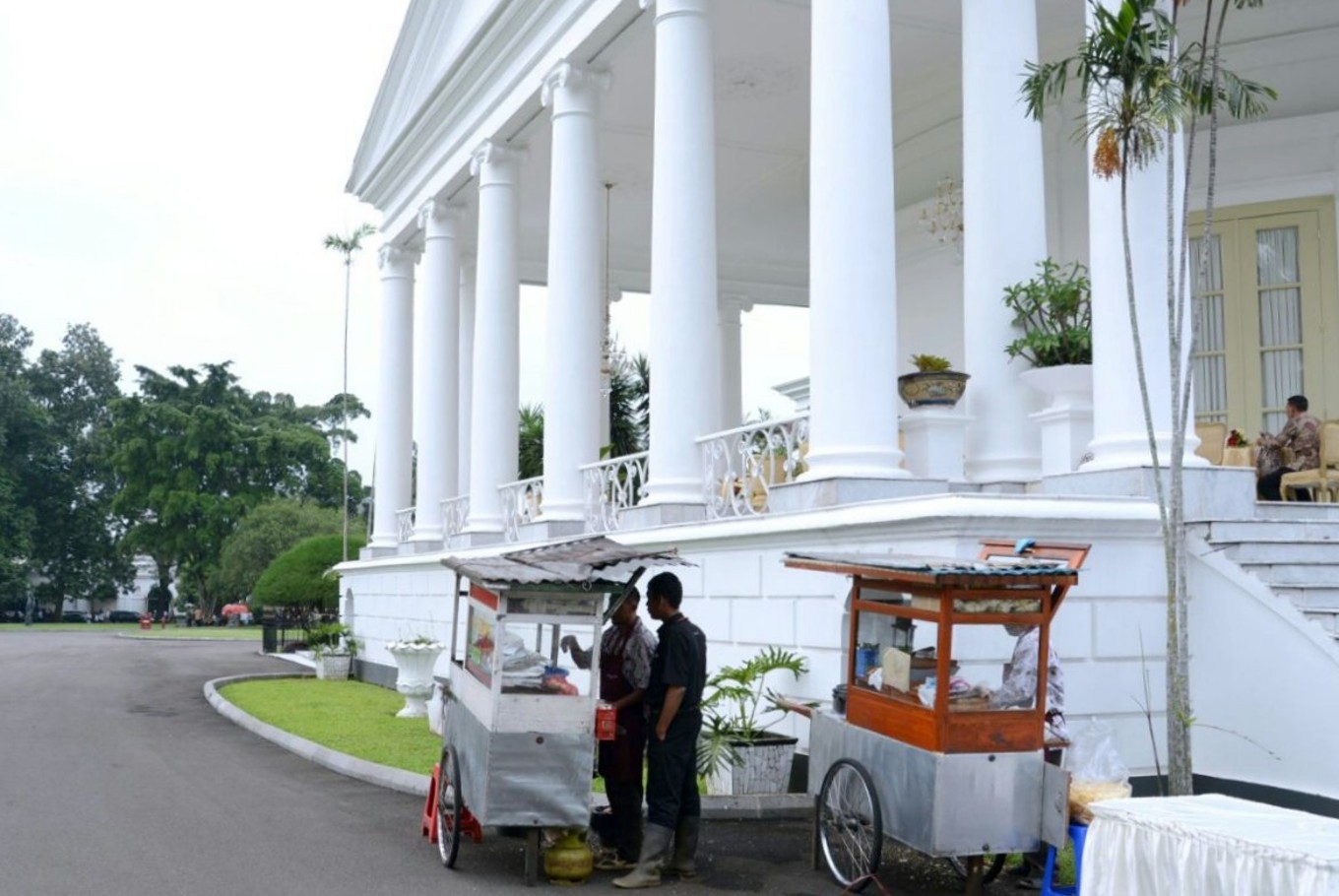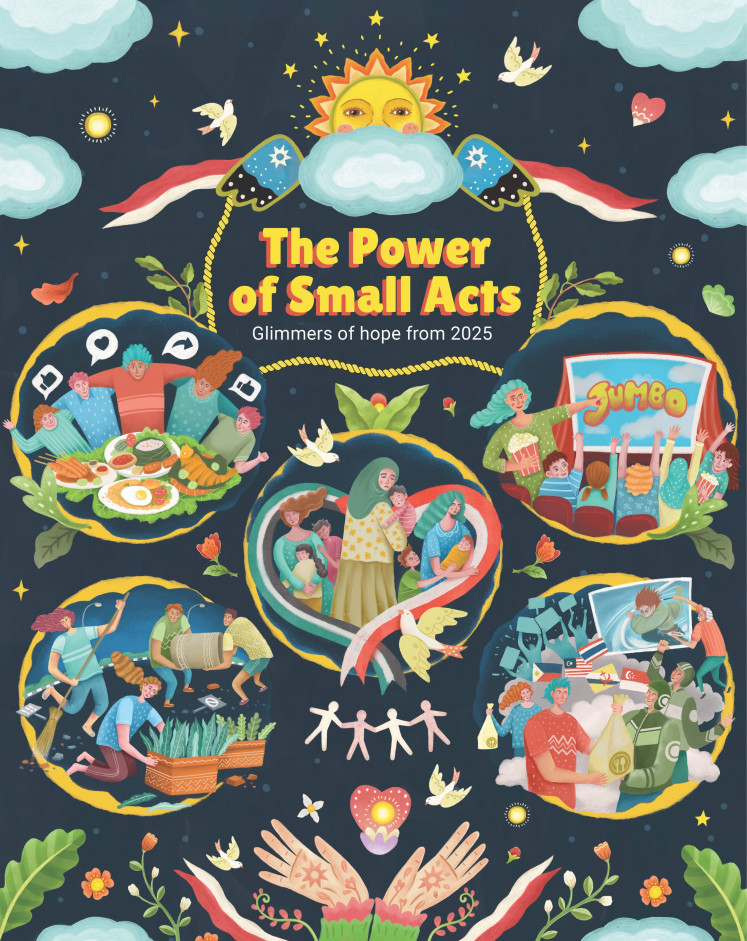Popular Reads
Top Results
Can't find what you're looking for?
View all search resultsPopular Reads
Top Results
Can't find what you're looking for?
View all search resultsRecipe to promoting Indonesian street food
Indonesian cuisine boasts both flavor and vibrancy and is a force to be reckoned with.
Change text size
Gift Premium Articles
to Anyone
In recent years, colorful and tasty Indonesian food has captivated international interests with highly rated reviews.
CNN Travel, for example, named rendang (beef simmered in coconut milk and spices) as the “World’s Most Delicious Dish” in 2011. During the recent World Street Food Congress 2017 in Manila, the Philippines, American chef and TV personality Anthony Bourdain reportedly praised the different kinds of Indonesian cuisine that have influenced the culinary palate of neighboring Southeast Asian countries.
Although Indonesian food has captivated the interest of many foodies across the world, the country still lacks the culinary credentials it deserves. Local chefs believe the country has a lot more to offer than the commonly known dishes if they are promoted through improved marketing tactics.
“I believe regional dishes such as kerak telor (spicy omelet) from Jakarta, lumpia Semarang (fried spring rolls), ayam betutu Bali (Balinese-style roasted or steamed chicken) are some of the dishes that have not yet reached their potential in terms of attracting tourists, but if done right could very well be a strong influence in our tourism,” celebrity chef Andrew Karmajana said.
More flavor: Celebrity chef Andrew Karmajana hosts an interactive cooking demonstration at the 2017 Indonesian Culinary Festival. (Inke Maris/File)In a society driven by buzzes of technology, promoting local cuisine is a marketing and branding process and not a culinary one. It is about targeting a market group with the correct tools.
“A little help from food bloggers will have a huge impact, because bloggers have a tremendous network of loyal followers, some of whom can be pretty fanatic, so if they say it’s spicy, their followers will think so too,” chef Kenny Rianto of Taste Paradise, Grand Hyatt Jakarta, said.
The chefs believe that the government could play an important role in helping them extend the efforts to bring Indonesian culture onto the world’s culinary map. Kenny said the government should hold more events or festivals targeting youth so that they could learn more about their own food culture.
Ganesha Pideksha, the executive chef of Tanamera Coffee Indonesia, said the same thing. He said the food industry had the potential to grow as long as the younger generation took an interest.
“I think Indonesian cuisine has a lot of potential abroad, and I think the government needs to work together with big producers or entertainers and produce content that will attract young people to understand more about the local food culture,” he said.
Ganesha said there was also a need to explore to the farthest island of the archipelago and promote the diverse food and variety on each island.
“Indonesian food has a lot to offer, and it’s not only rendang, bakso [meatball soup], nasi goreng and satay. For example, Manadonese food is always good, and I personally think soto laksa Medan tastes better than Singaporean laksa,” he said.
The rich flavors and colorful Indonesian street food can be found during a number of culinary festivals held across the country. Residents in the capital were recently pampered with food events featuring favorite and legendary food, such as Festival Kuliner Nusantara (Indonesian Culinary Festival) in Mall Artha Gading in North Jakarta and Kampoeng Legenda in Mal Ciputra in West Jakarta.
Historically, the archipelago attracted international trade even centuries ago for its abundant spices. Its culinary heritage celebrates rich flavors of the vast regions extending over 17,000 islands.
Considering the country’s long history as the “land of spices,” its local dishes are a composition of geographic, cultural diversity and multiple foreign influences. Each street item reflects the fusion of local ingredients and traditional cooking styles that have the potential to attract taste buds worldwide.
Kenny, who is also a food consultant, says Indonesian street food like sweet martabak (pancake) is versatile, so it can easily be exposed to foreigners using the correct promotional efforts.
Locally called martabak manis, this comfort food is widely available on practically every corner, especially in the evening. Once the thick batter is cooked, the layers are slathered with an assortment of choices from butter and chocolate sprinkles to freshly grated cheese. It is then completed with a generous drizzle of condensed milk, peanuts and sesame seeds.
“Nowadays there are more martabak choices. I’m pretty sure it would be easy to introduce to other countries. My family, who lives in Singapore, is always craving martabak, and they always ask me to bring some to Singapore every time,” Kenny said.
Although Indonesian street food is known for its flavors, efforts are needed to improve hygiene and presentation to appeal to more people.
“Hygiene and sanitation in Indonesia is a big problem, starting from the water we use to wash dishes to cooking methods. We need to be aware of this problem, and not just our government but also concerning culinary practices in our cuisine,” Ganesha said.
***
The writer is an intern at The Jakarta Post













